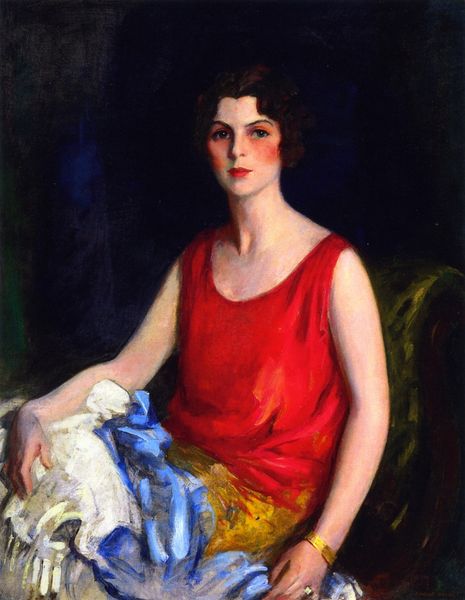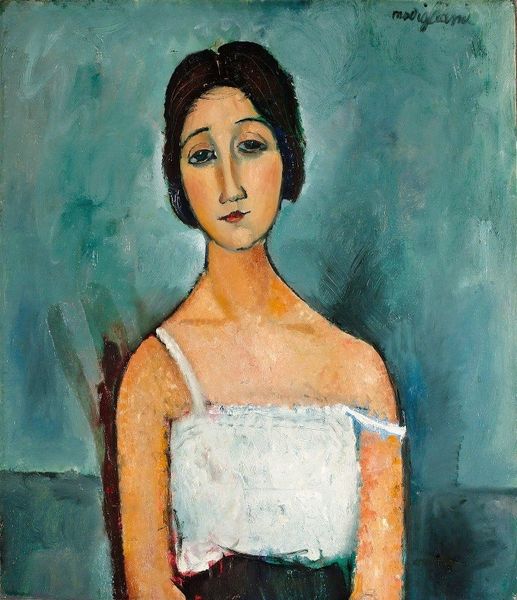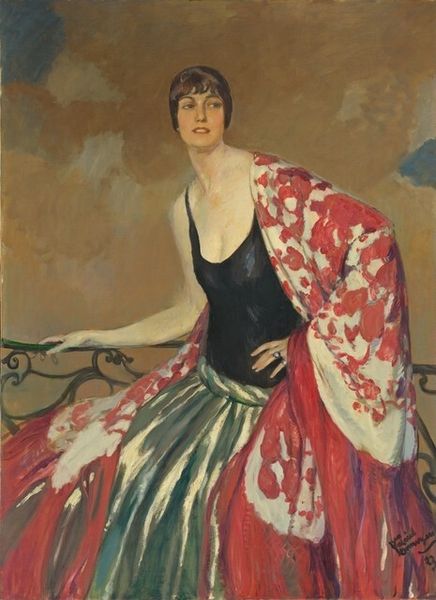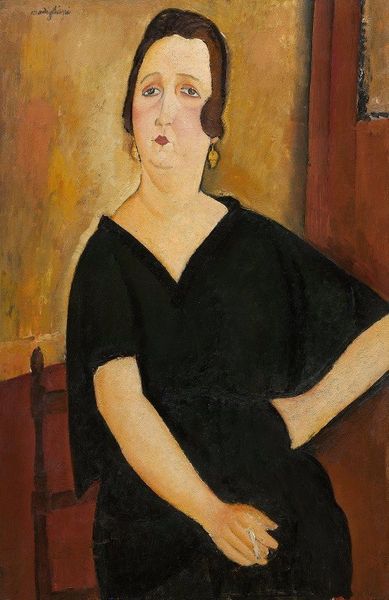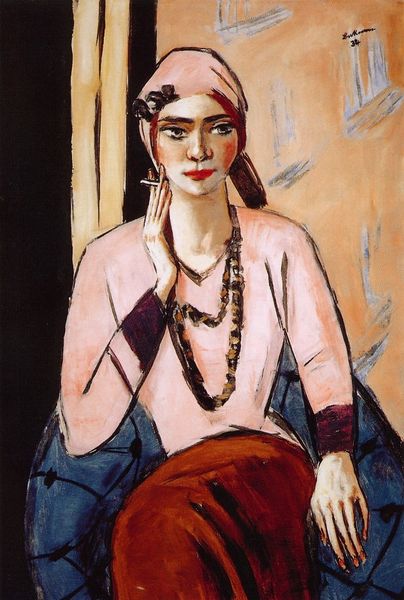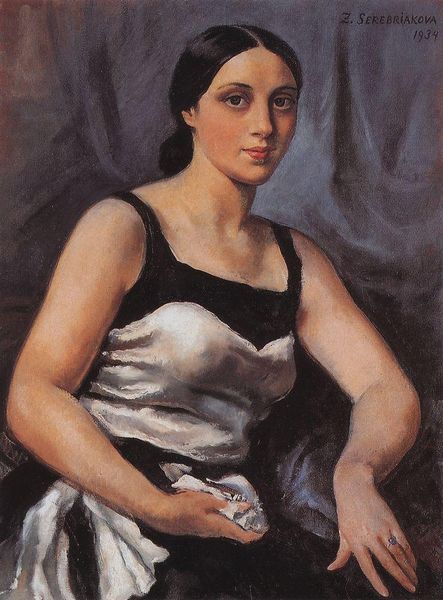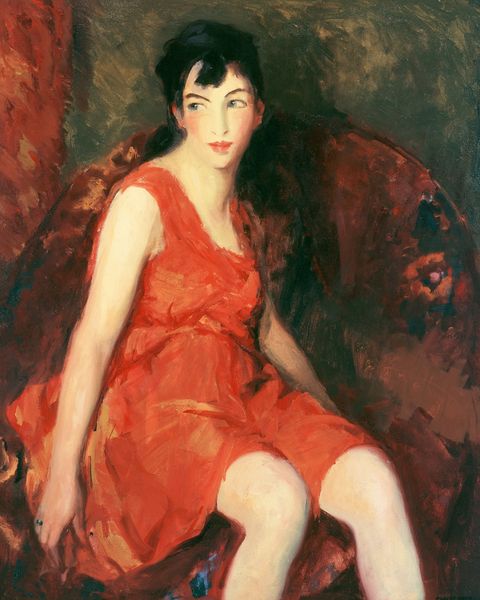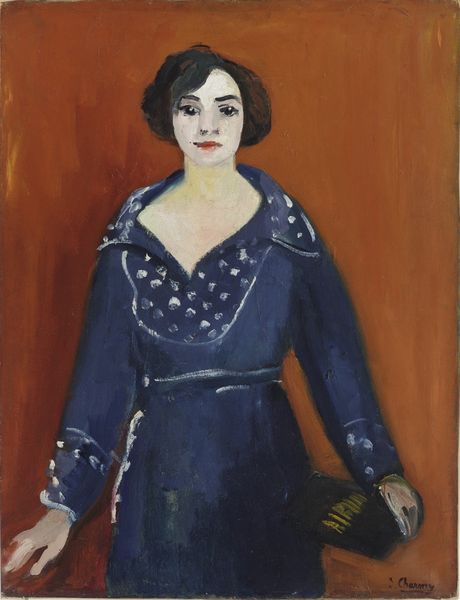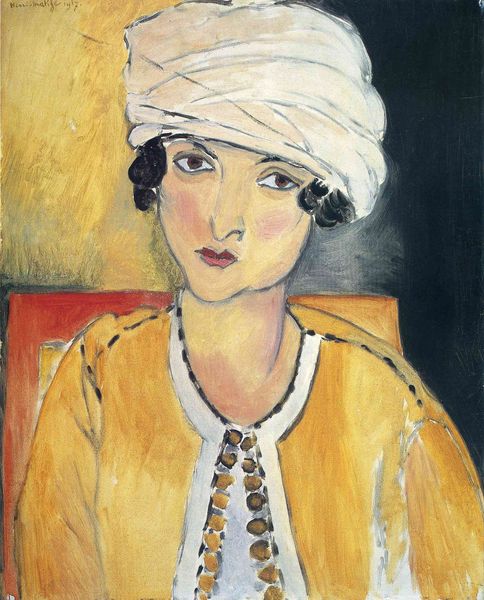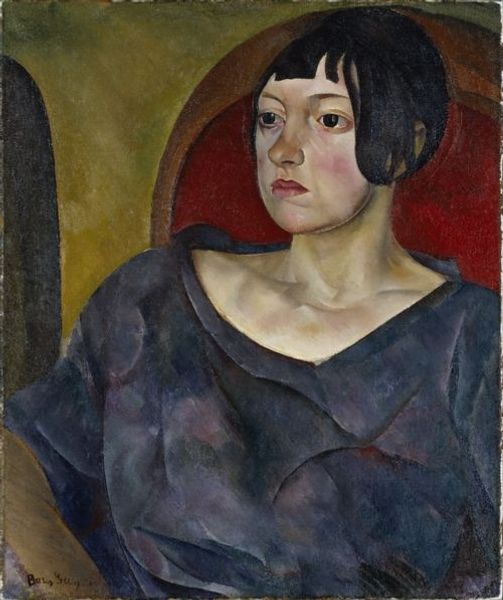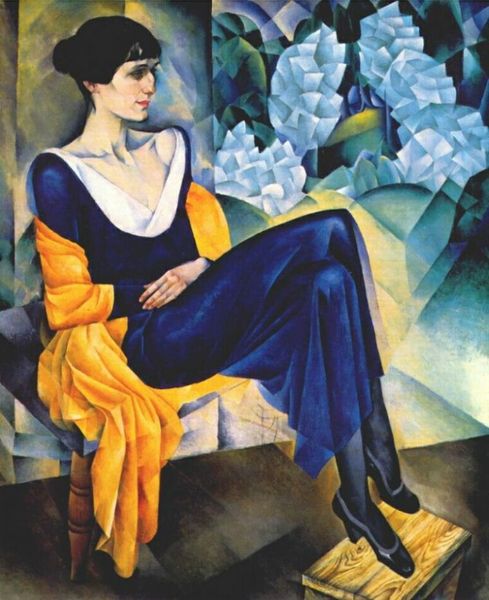
oil-paint
#
portrait
#
oil-paint
#
figuration
#
oil painting
#
intimism
#
portrait art
#
modernism
Dimensions: overall: 122 x 91.5 cm (48 1/16 x 36 in.) framed: 132.1 x 101.6 x 5.4 cm (52 x 40 x 2 1/8 in.)
Copyright: National Gallery of Art: CC0 1.0
Curator: Standing before us is Augustus John's captivating portrait, "Mrs. Alexander H. McLanahan," created around 1927. The work exemplifies the style of modernism of the early 20th century and relies on oil paint as the artist's medium of choice. Editor: It's the striking colour palette that first grabs my attention. The contrast between the subject's vibrant yellow dress and the deep blue shawl is quite powerful, set against that mottled umber backdrop. It almost vibrates. Curator: John was indeed a master of colour, but I find myself focusing on his confident handling of the materials. The brushstrokes are broad and visible, particularly in the drapery, highlighting the very act of painting. It is really interesting to look at the application and quality of that specific oil paint John selects and implements to make it his own! Editor: Absolutely, the visibility of the brushstrokes makes it so interesting, but think about this particular woman. Mrs. McLanahan embodies a certain fashionable confidence, doesn't she? The portrait offers a glimpse into the world of high society, perhaps even the influence she held in it, and its conventions of display during the interwar period. I would argue it subtly underscores questions of status and visibility within the society it represents. Curator: Precisely, the materiality extends to the social fabric that informed the work’s commission and reception. Considering the availability of materials, their cost, and the logistics of creating a portrait of this scale all reflect aspects of its production and consumption within a specific social context. Who had the money to spend? Where and from whom did they purchase their supplies? Who got rich from it? Editor: A compelling point! By examining its creation through that socio-economic lens, it really contextualises the narrative around John's social circles and who, within that period, found visibility and opportunity, through art making practices and commissioned artwork. I think understanding who benefits is equally as compelling as looking at the painting itself! Curator: It certainly shifts our gaze beyond the mere surface, right? To focus less on what’s rendered and more on what rendered it, materially and economically, I’d suggest that's equally key to this painting and others within the genre. Editor: An alternative approach to understanding John, as always. This look has certainly revealed quite different layers within this fascinating portrait and given us something new to think about!
Comments
No comments
Be the first to comment and join the conversation on the ultimate creative platform.
